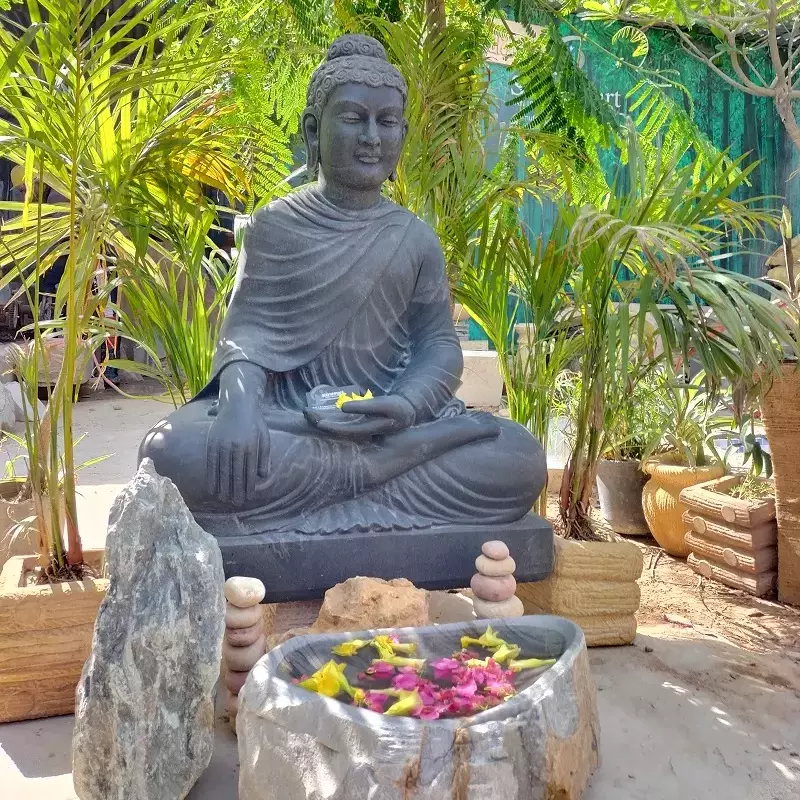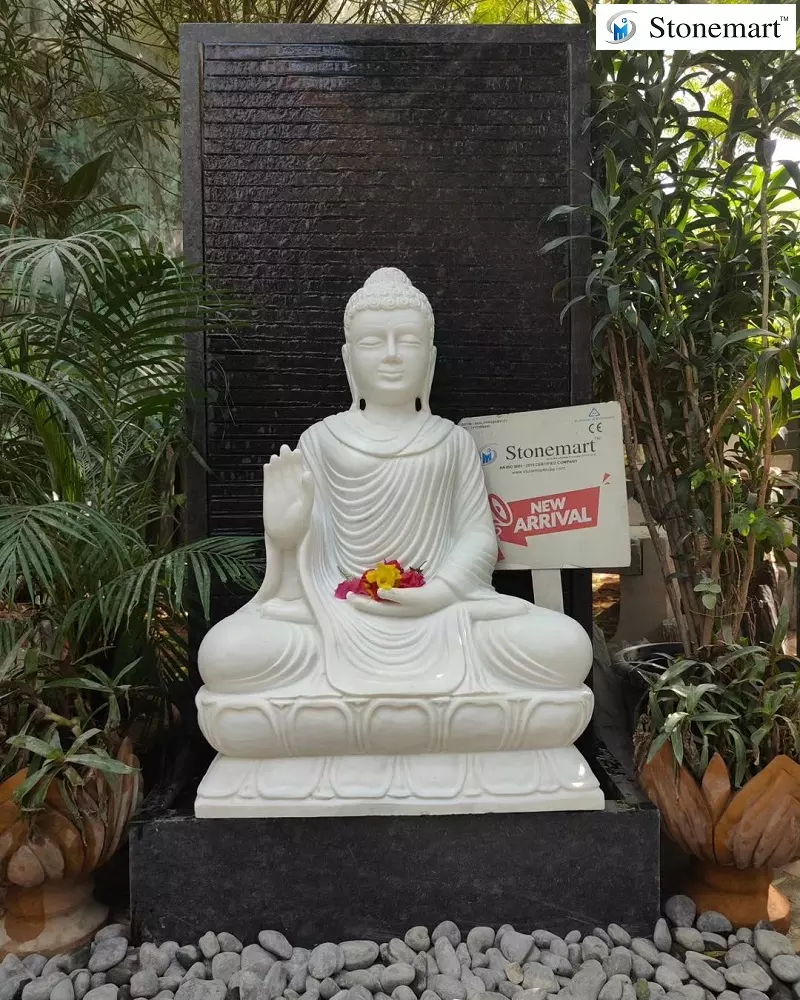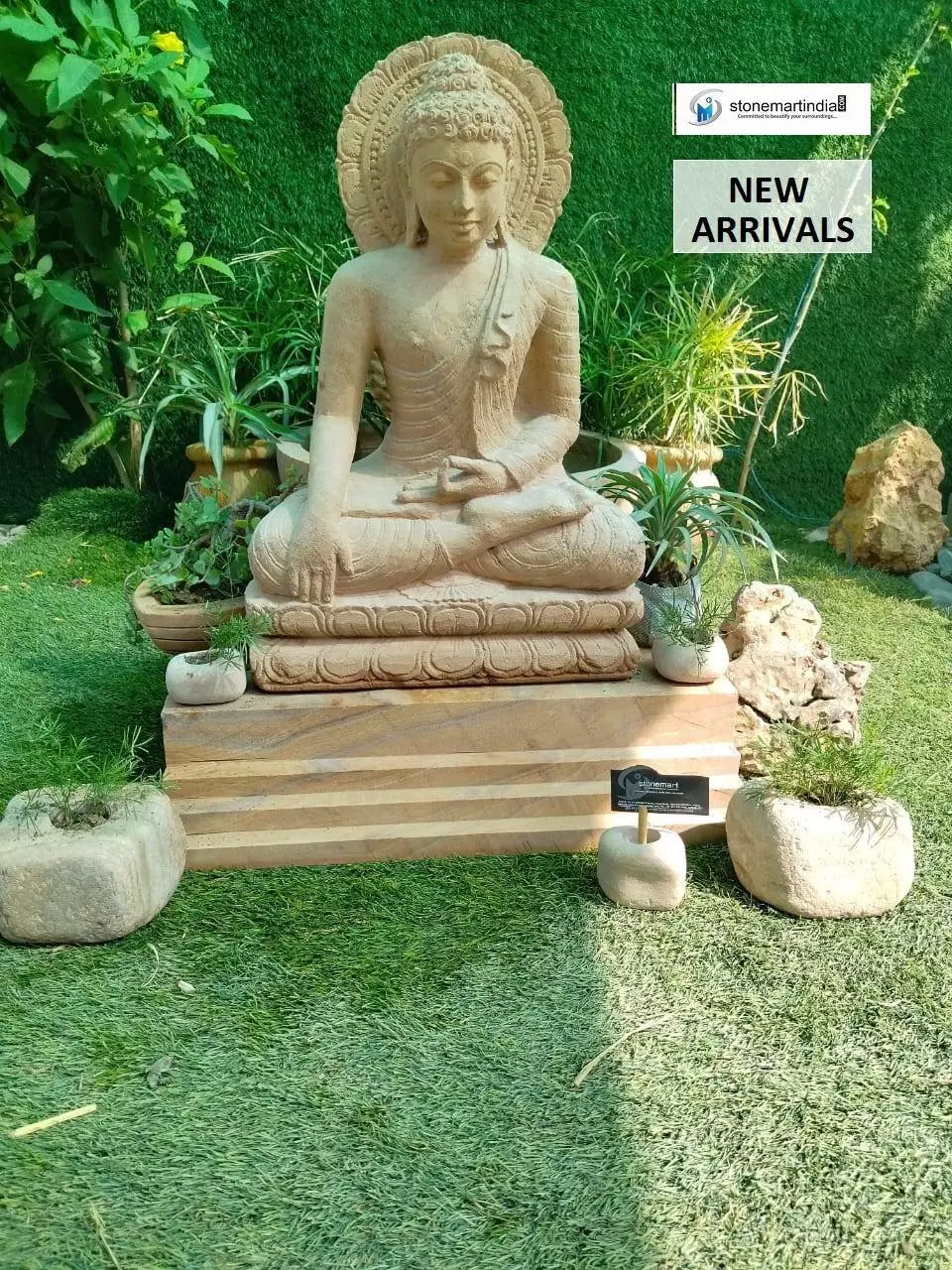What is the Difference Between an Abhaya Mudra and a Bhumisparsha Mudra Buddha Statue?

Let us all begin by admitting the fact that most of us buy a Buddha statue without giving a serious thought to the mudra it depicts. Will the mudra portrayed by the Buddha seriously makes a difference at your home? Well, indeed it will make a difference. A Buddha statue in abhaya mudra would appear different from a bhumisparsha mudra Buddha statue and of course the influence of the former would be different from that of the latter.
Here, the distinction between the two mudras are not limited to the historical context itself. But there are certain differences between abhaya mudra Buddha sculpture and bhumisparsha mudra Buddha sculpture that are significant to keep in mind before making your purchase.
MUST READ: How Having the Right Buddha Statue at the Right Place can Transform your Luck?

Let us try to shed some spotlight over some of the major differences between these Buddha idols and find the right statue for the right placement indoor and outdoor. Look at the benchmarks on the grounds of which the classification of both the Buddhas has been done in the table below -
| Criterion | Abhaya Mudra Buddha Statue | Bhumisparsha Mudra Buddha Statue |
|---|---|---|
| Origin | The fearless mudra is associated with the fifth dhyani Buddha called Amoghasiddhi. It was through this mudra that the Buddha overcame jealousy and fear after his cousin Devdutta plotted Nalagiri, a mad elephant to finish him. This mudra of blessing and fearlessness assuaged the raging elephant by bestowing him Buddha’s patronage. | The Earth touching mudra is associated with the story of Akshobhya. When Siddhartha Gautama defeated the temptations of demon king Mara to attain enlightenment; Mara asked him to present some witness to testify the fact that he indeed become the Buddha. Hearing that, the Buddha touched the ground with the fingers of his right hand to call upon Bhudevi or the Earth goddess to bear witness to his enlightenment; which the goddess happily obliged. |
| Appearance | Abhay mudra can be showcased through sitting Buddha statue as well as standing Buddha statue with the right hand palm raised in a blessing mudra. The palm is slightly cupped and tilted a bit to face the viewer. | Bhumisparsha mudra can only be showcased through a sitting Buddha statue with fingers of the right hand about to touch the ground and the left hand neatly being placed upon the lap itself. |
| Vastu and Feng-Shui Effects | According to Vastu, the presence of fearless Buddha sculpture at the entrance safeguards the vicinity against negative energies, misfortune and evil spirits. | Earth touching mudra is the symbol of human salvation. The presence of this stone Buddha statue would transform the delusion of anger into wisdom. The Buddha also represents a new beginning and perfectly suited for those who wish to start upon a new journey. |
| Placement | Keep this blessing Buddha statue facing East near the entrance. It builds up confidence and make the person fearless to face all forms of uncertainties in life. | Meanwhile, Bhumisparsha Buddha can be installed both indoor and outdoor. If you can place it at the central area of the property facing East, then it would be even better. To mark a new and transformed beginning, it is best to be kept facing East, the direction of the rising Sun. |
MUST READ: What is the Difference Between an Abhaya Mudra and a Vitarka Mudra Buddha Statue?
We hope the comparative table above has given you enough clarity of thought to distinguish between a blessing Buddha statue and an Earth touching Buddha statue. Now you can place the order for a Buddha sculpture as per your set requirements. Always shop for the Buddha statue hand carved out of natural stone. They are free of adulteration and deemed best for Vastu and Feng shui placements. Choose out of Buddha fountains, black marble Buddha statues, white marble Buddha statues, and sandstone Buddha statues in any of the two discussed mudras.

Place the order online for 2 feet Buddha statue, 3 feet Buddha statue, 4 feet Buddha statue, 5 feet Buddha statue out of an exclusive range of 100% bona fide ISO 9001:2015 and CE Certified collection of lord Buddha statues. Visit Stonemart™ India and see what the zenith of artistic merit can truly accomplish for you!
